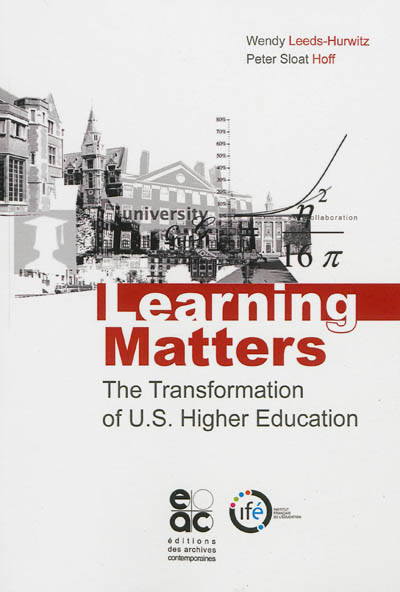
- Afhalen na 1 uur in een winkel met voorraad
- Gratis thuislevering in België vanaf € 30
- Ruim aanbod met 7 miljoen producten
- Afhalen na 1 uur in een winkel met voorraad
- Gratis thuislevering in België vanaf € 30
- Ruim aanbod met 7 miljoen producten
Learning matters
the transformation of US higher education
Wendy Leeds-Hurwitz, Peter Sloat HoffOmschrijving
Higher education in the United States of America, considered by many to set
a worldwide standard for broad access and high levels of excellence, has
for many decades seen massive changes in its approaches to teaching and
learning. Redesigning and transforming the way colleges and universities
teach their students has been likened to reconstructing an airplane while it
remains aloft. More than 4,000 US colleges and universities have met the
challenge by analyzing major changes in student populations and introducing
new instructional techniques that recognize the primacy of learning over
teaching. This seemingly innocent but powerful transformation, acknowledging
that teaching only matters as a means to the real end - learning - is powering
a pedagogical revolution.
The Learning Revolution in US higher education began when World War II
veterans flooded university classrooms, soon to be followed by their children,
the American "Baby Boom." Overwhelming numbers of new students from new
kinds of backgrounds flooded colleges and universities, forcing professors to
rethink how they went about teaching these new generations.
To handle the numbers, many new universities were created, and many
established centers for teaching excellence to help professors adapt to new
populations with new techniques. In the 1990s, higher education further
professionalized the teaching craft via the Schlarship of Teaching and
Learning. Research into how students learn and how to help them learn took
its place alongside traditional academic research. Aided by a wave of new
technologies, teaching centers and the scholarship of teaching and learning
are transforming the university classroom as well as many new venues outside
the classroom where learning now takes place. The resulting new pedagogical
architecture now embraces every dimension of US higher education.
Specificaties
Betrokkenen
- Auteur(s):
- Uitgeverij:
Inhoud
- Aantal bladzijden:
- 309
- Taal:
- Engels
Eigenschappen
- Productcode (EAN):
- 9782813000873
- Verschijningsdatum:
- 6/11/2012
- Uitvoering:
- Paperback
- Afmetingen:
- 160 mm x 220 mm
- Gewicht:
- 478 g

Alleen bij Standaard Boekhandel
Beoordelingen
We publiceren alleen reviews die voldoen aan de voorwaarden voor reviews. Bekijk onze voorwaarden voor reviews.











